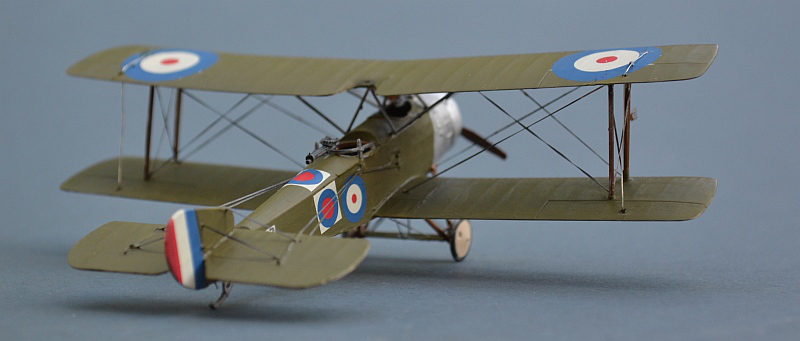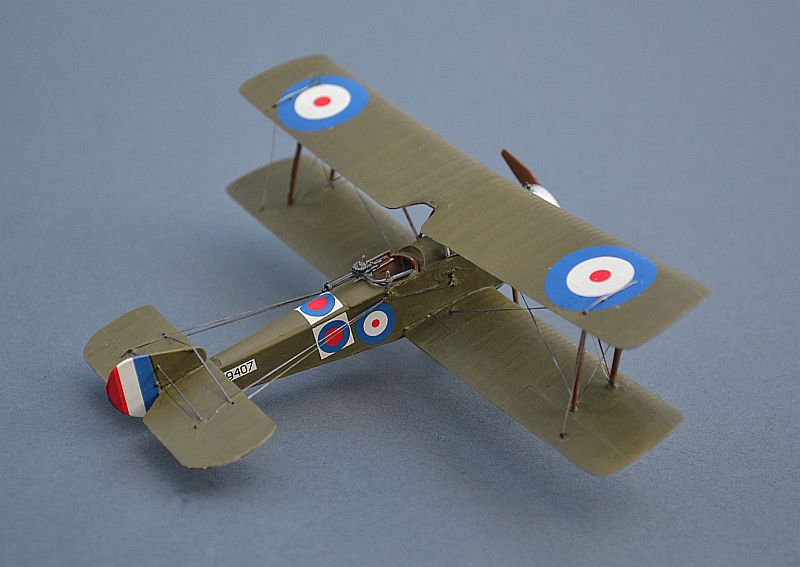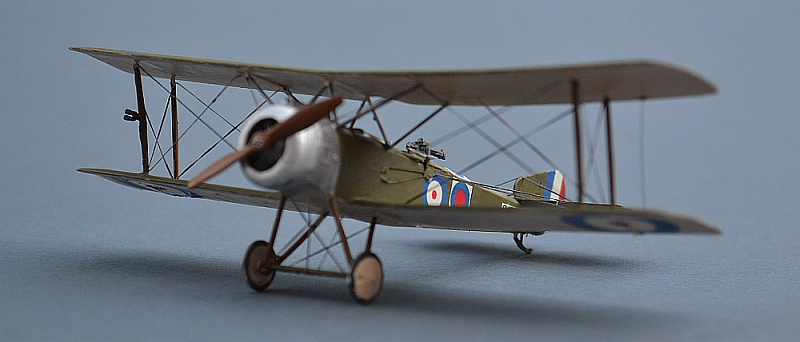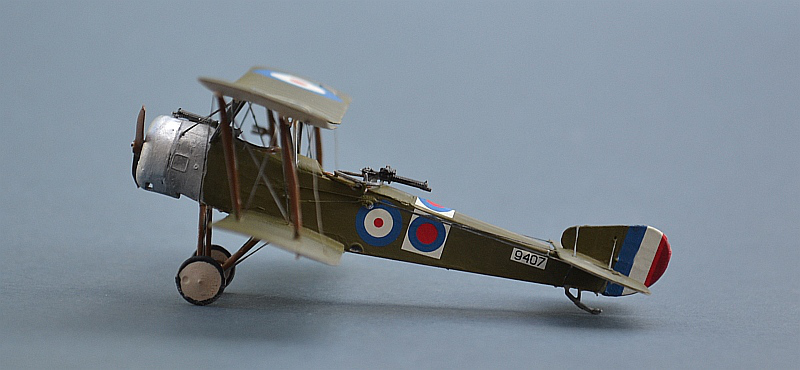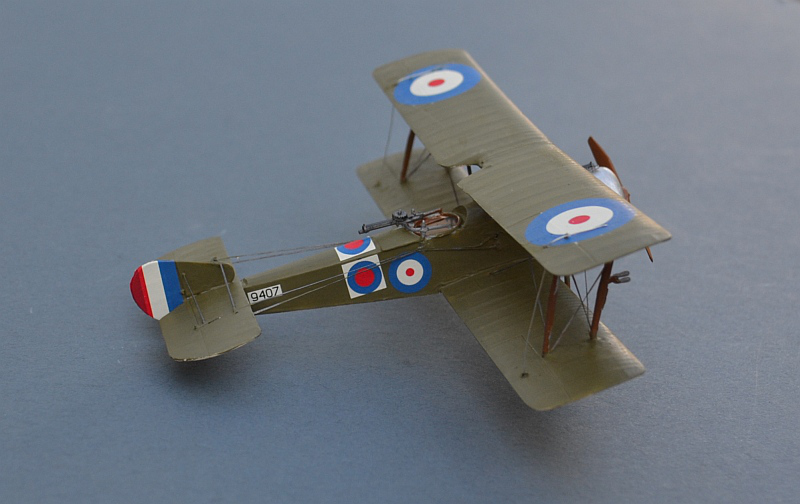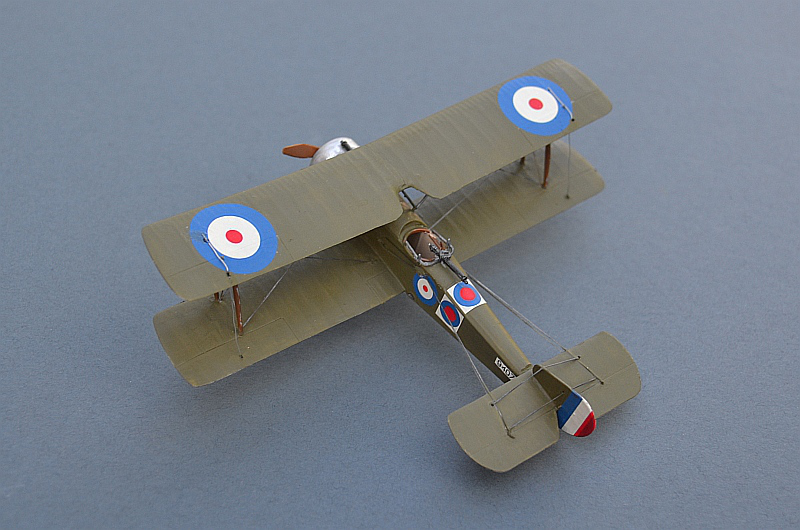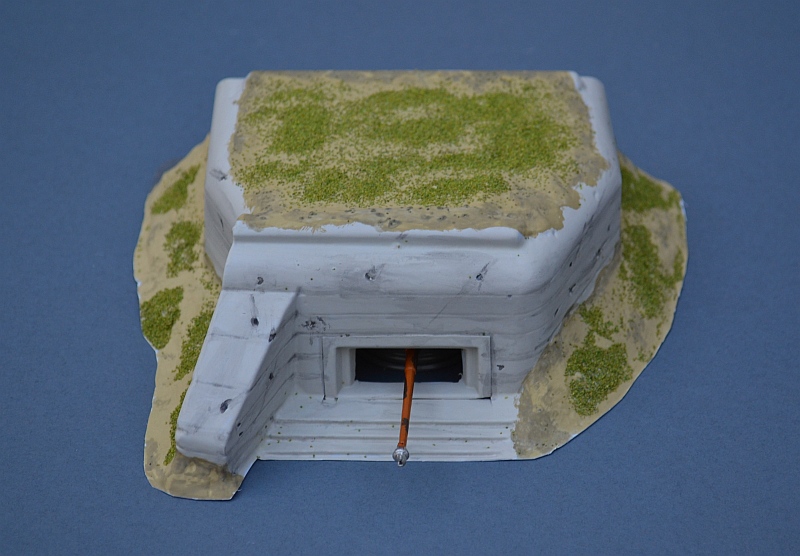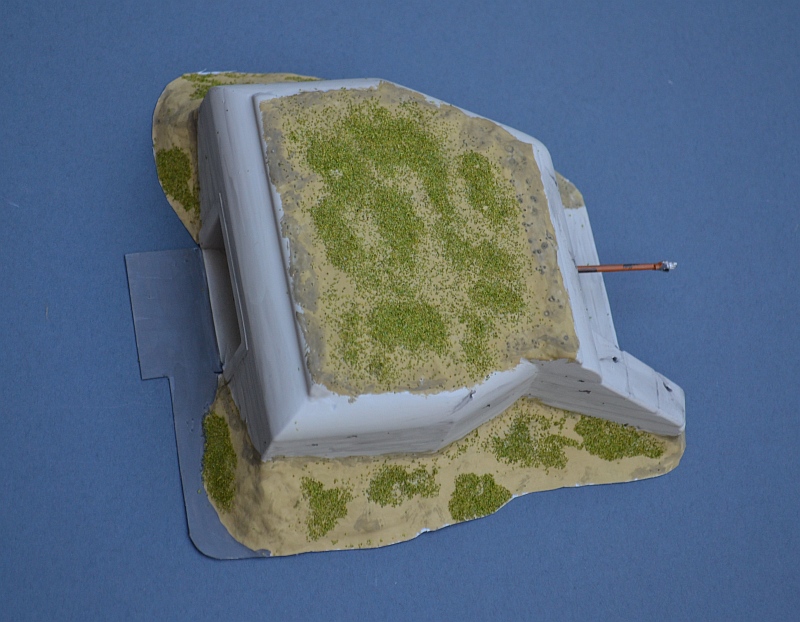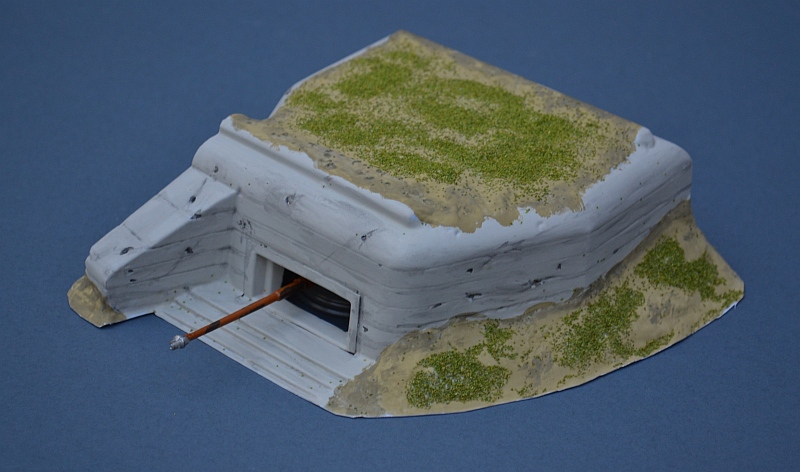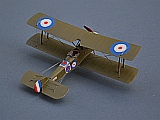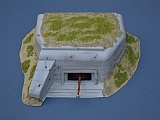July 2014
Sopwith 1½ Strutter
German D-
![]() Selected WW2 70th Anniversaries this month:
Selected WW2 70th Anniversaries this month:
Between 2009 and 2015, I have set myself a general modelling theme based on selected 70th Anniversaries from WW2.
3rd July 1944 -
9 Jul -
18 Jul -
20 Jul -
21 Jul -
100th Anniversary of the Royal Naval Air Service
Sopwith Type 9400
Land Clerget Tractor 1½ Strutter
3 Wing, Royal Naval Air Service, Nancy-
Eastern Express (Toko) 1/72
On 1 July 1914 the former Naval Wing of the Royal Flying Corps was established as the Royal Naval Air Service, an integral part of the Military Branch of the Royal Navy.
By the outbreak of the First World War in August 1914, the RNAS possessed 93 aircraft,
six airships, two balloons and 727 personnel. The RN maintained twelve airship stations
around the coast of Britain. In addition to operating seaplanes, carrier-
Toko’s 1½ Strutter kit is very finely moulded with excellent detail. Produced more
recently by Eastern Express, it is available in many versions, from the basic two-
This version of the kit comes with decals for two RNAS aircraft. The decals are slightly fragile, but well printed. Building is straightforward, with good location points for the struts and fit overall is reasonable, although the underfuselage joint is slightly rough. Rigging is a little “challenging” but not as difficult as I found my Sopwith Triplane to be!
Perhaps the most impressive part of this kit though is its commendably thin wings, especially the trailing edges. I haven’t seen one on sale for a while, but when I do I fully hope to grab hold of one of the other versions.
Have a look at my "RN Props" pages for details of my other WW1 Naval aircraft models
Amera 1/72
This is a final hangover from last month’s D-
Amera Moulding produce this vac-
Bunkers such as these were placed on the flanks of defended beaches, with the curtain wall providing protection from the opposite side to that covered by the bunker. Guns used in these bunkers could be 37mm, 75mm or 88mm; I have used a spare 88mm barrel from a long discarded kit!
www.gengriz.co.uk
Background Image: A ship-
For much of the war, the Sopwith aircraft company were contracted to supply the RNAS exclusively. However, Sopwith’s products were so successful, that aircraft were regularly transferred from RNAS stocks to to the Royal Flying Corps. RNAS fighter squadrons deployed the innovative Sopwith Pup many months before the RFC, then replaced them with the revolutionary Sopwith Triplane (which was not operated by the RFC, but a captured example inspired the famous Fokker Triplane) and then the famous Sopwith Camel.
On 1 April 1918 the RNAS was merged with the RFC to form the Royal Air Force. Former RNAS squadrons can be identified by their 200 series Squadron numbers (e.g. Naval 8 Sqn became 208 Sqn RAF).
At the time of the merger, the Royal Naval Air Service had 55,066 officers and men, 2,949 aircraft, 103 airships and 126 coastal air stations. Amongst its numbers, the service included many famous airmen who went on to play a crucial role within the Royal Air Force and other Commonwealth Air Forces.
The Sopwith Type 9400 was an innovative two-
The first aircraft reached No 5 Wing RNAS in France in April 1916, with the RFC’s 70 Sqn forming on transferred naval aircraft in July 1916. As well as service as a fighter on the Western Front, RNAS 1½ Strutters also saw service as bombers at sea and in the Aegean and Mediterranean theatres.
Over 1,500 were built for the RNAS and RFC, but ultimately, the largest user of the 1½ Strutter was the French Air Force, with over 4,500 built.
The aircraft depicted by this model is that flown by Flight Sub-
